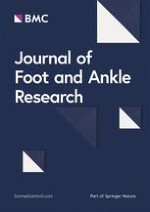Background
Materials and methods
Variable | ICC (95% CI) | Mean (SD) | SEM |
|---|---|---|---|
Foot Posture Index | 0.79 (0.38-0.94) | 4.3 (2.7) | 1.3 |
Lunge Test | 0.83 (0.56-0.94) | 43.7 (5.0) | 2.9 deg |
Beighton Scale | 0.73 (0.42-0.88) | 2.4 (1.2) | 1.2 |
Lower Limb Assessment Score | 0.78 (0.41-0.93) | 9.7 (3.3) | 2.5 |
